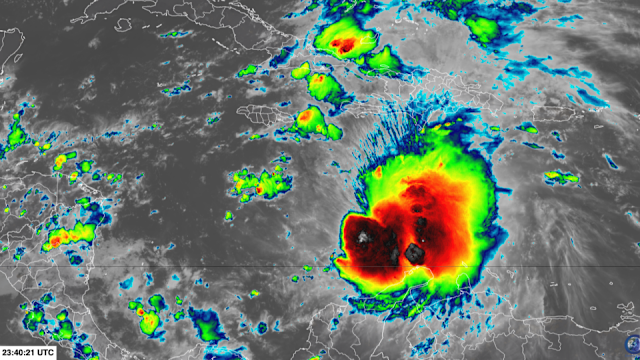Trump’s tariffs, deportations and climate change are making groceries more expensive
New York — President Donald Trump has promised to cut grocery costs, but food economists and retailers say his policies are helping drive them higher.
Grocery prices rose last month at their fastest pace in three years, fueled by tariffs, labor shortages from immigration crackdowns, and extreme weather disrupting production. Prices climbed 0.6% in August from July and are up 2.7% over the past year, according to the Bureau of Labor Statistics.
For many Americans, food costs are one of the most tangible measures of the economy. More than half say their grocery bills are a major source of stress, surveys show.
“Food prices are top of mind for consumers. It’s dominating kitchen table conversations across the country,” said David Ortega, a food economist at Michigan State University. “It’s also a political flash point. People voted expecting their candidate to lower grocery costs.”
Tariffs drive up imports
Products heavily dependent on imports or immigrant labor have seen the steepest increases. Coffee prices have surged nearly 21% over the past year after new tariffs of up to 50% were placed on Brazilian imports. Fresh fruit and vegetables — much of which comes from abroad — are also rising. Apples and lettuce jumped 3.5% last month, while tomatoes rose 4.5% after tariffs on Mexican imports.
A Yale Budget Lab analysis estimates food costs will rise 3.4% in the short term and remain 2.5% higher in the long run if tariffs stay in place.
The White House, however, argues the broader inflation picture is improving. “One month of data does not make a trend,” said spokesperson Kush Desai, adding that Trump has secured “unprecedented trade deals” and investments meant to “restore American greatness.”
Immigration crackdown tightens supply
Labor shortages are another pressure point. About 42% of U.S. farmworkers are undocumented, according to the Agriculture Department. But stepped-up immigration raids have left crops unharvested in California and scared off workers in states like New York.
Since January, 1.2 million foreign-born workers have exited the labor force. Agricultural employment fell 6.5% between March and July — a loss of roughly 155,000 workers.
“With fewer workers, labor costs rise, and food prices follow,” said William Masters, a professor of food economics at Tufts University. “If you’re thinking of building a new orchard or greenhouse, you probably wouldn’t now because you can’t count on the labor.”
Climate and cattle herds add pressure
Climate change is compounding the problem. Florida hurricanes and Brazilian droughts have pushed orange prices up 5.2% over the year, while drought-driven herd declines sent beef prices nearly 14% higher. U.S. cattle herds are now at their smallest in 74 years.
Shoppers change habits
Retailers say higher food costs are splitting shoppers into two distinct groups. Wealthier households continue to buy premium products, but low- and middle-income families are cutting back.
“They’re making smaller but more frequent trips, buying more store brands, and eating out less,” Kroger CEO Ron Sargent said on an earnings call.
Kroger is even bringing back paper coupons after phasing many out in 2023. Sargent said the move is designed to help customers “who don’t have a $600 iPhone” access discounts.
Looming cuts to the Supplemental Nutrition Assistance Program (SNAP) could worsen the squeeze. Republicans’ proposed One Big Beautiful Bill Act would impose the largest cuts in the program’s history, stripping benefits from an estimated 4 million people each month.




